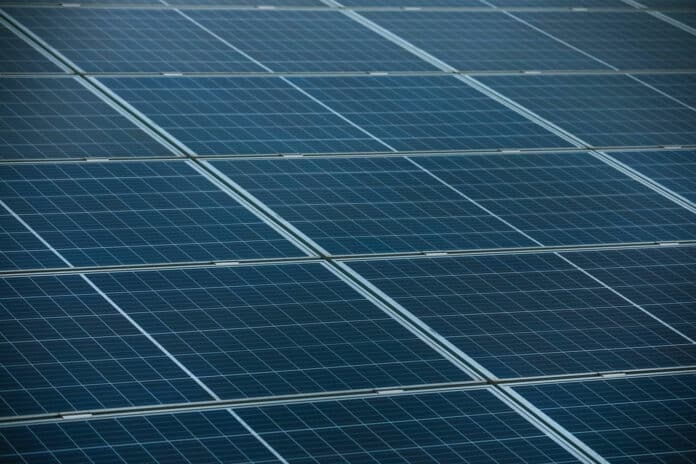Due to their efficiency in converting sunlight into electricity, perovskite solar cells (PSCs) have drawn a significant amount of research attention as a promising alternative to conventional silicon-based solar cells. However, the commercialization and widespread use of PSCs have been hindered by their stability issues. Therefore, achieving operational stability has emerged as a common goal among scientists in the field.
Now, researchers led by Michael Grätzel at EPFL and Xiong Li at the Michael Grätzel Center for Mesoscopic Solar Cells in Wuhan (China) have developed a new technique using a radical polymer and functionalized fullerene derivative that addresses stability concerns and increases the efficiency of perovskite solar cells.
The phosphonic acid-functionalized fullerene derivative was used as a “grain boundary modulator,” which helps strengthen the perovskite crystal structure. The modulator, introduced by the researchers into the charge-transporting layer of the PSC, also increases the PSC’s resistance to environmental stressors like heat and moisture.
The team also created a redox-active radical polymer known as poly(oxoammonium salt) that effectively p-dopes the hole-transporting material – a crucial component of the PSCs. As a “p-dopant,” the polymer improves the conductivity and stability of the hole-transporting material. The p-doping process involves introducing mobile charge electronic charge carriers into the material to improve its conductivity and stability.
Using the new technique, researchers achieved power conversion efficiencies of 23.5% for 1-square-centimeter mixed–cation-anion PSCs and 21.4% for 17.1-square-centimeter minimodules. The PSCs retained 95.5% of their initial efficiencies after more than 3200 hours of continuous exposure to simulated sunlight, maintaining the temperature at 70°C.
The new method can potentially revolutionize the use of perovskite solar cells, making them accessible for use on a larger scale. The researchers believe that their technique could be easily scaled up for commercial production and could potentially be used to create stable, high-efficiency PSC modules.
Journal reference:
- Shuai You, Haipeng Zeng, Yuhang Liu, Bing Han, Min Li, Lin Li, Xin Zheng, Rui Guo, Long Luo, Zhe Li, Chi Zhang, Ranran Liu, Yang Zhao, Shujing Zhang, Qi Peng, Ti Wang, Qi Chen, Felix T. Eickemeyer, Brian Carlsen, Shaik M. Zakeeruddin, Liqiang Mai, Yaoguang Rong, Michael Grätzel, and Xiong Li. Radical polymeric p-doping and grain modulation for stable, efficient perovskite solar modules. Science, 2023; DOI: 10.1126/science.add8786
